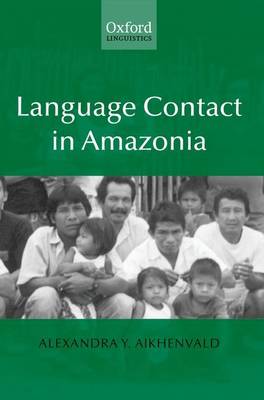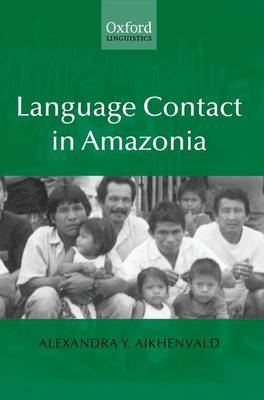
Door een staking bij bpost kan je online bestelling op dit moment iets langer onderweg zijn dan voorzien. Dringend iets nodig? Onze winkels ontvangen jou met open armen!
- Afhalen na 1 uur in een winkel met voorraad
- Gratis thuislevering in België vanaf € 30
- Ruim aanbod met 7 miljoen producten
Door een staking bij bpost kan je online bestelling op dit moment iets langer onderweg zijn dan voorzien. Dringend iets nodig? Onze winkels ontvangen jou met open armen!
- Afhalen na 1 uur in een winkel met voorraad
- Gratis thuislevering in België vanaf € 30
- Ruim aanbod met 7 miljoen producten
Zoeken
€ 81,45
+ 162 punten
Uitvoering
Omschrijving
This book considers how and why forms and meanings of different languages at different times may resemble one another. The author explains the relationship between areal diffusion and the genetic development of languages, and reveals the means of distinguishing what may cause one language to share the characteristics of another. Aikhenvald uses the example of Arawak and Tucanoan languages spoken in the large area of the Vaupes river basin in northwest Amazonia, which spans Colombia and Brazil. In this region language is seen as a badge of identity: language mixing, interaction, and influence are resisted for ideological reasons. The book considers which grammatical categories are most and least likely to be borrowed in a situation of prolonged language contact where lexical borrowing is reduced to a minimum. The author provides a genetic analysis of the languages of the region and considers their historical relationships with languages of the same family outside it. She also examines changes brought about by recent contact with European languages and culture, and the linguistic and cultural effects of being part of a group that is aware of the threat to its language and identity. The book is presented in relatively nontechnical language and will interest linguists and anthropologists.
Specificaties
Betrokkenen
- Auteur(s):
- Uitgeverij:
Inhoud
- Aantal bladzijden:
- 400
- Taal:
- Engels
Eigenschappen
- Productcode (EAN):
- 9780199588244
- Verschijningsdatum:
- 15/06/2010
- Uitvoering:
- Paperback
- Formaat:
- Trade paperback (VS)
- Afmetingen:
- 231 mm x 155 mm
- Gewicht:
- 635 g

Alleen bij Standaard Boekhandel
+ 162 punten op je klantenkaart van Standaard Boekhandel
Beoordelingen
We publiceren alleen reviews die voldoen aan de voorwaarden voor reviews. Bekijk onze voorwaarden voor reviews.











